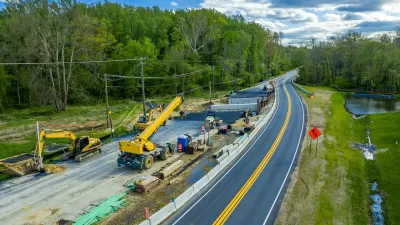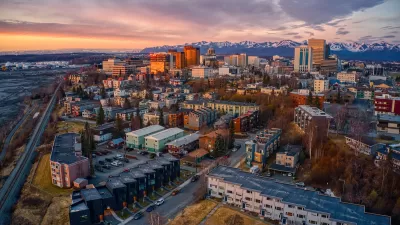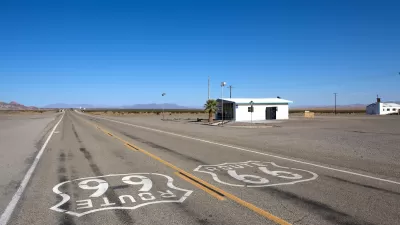Technology creates new challenges and opportunities, and this came home to me a couple of weeks ago when I was previewing a rough cut of Gridlock: Hell on Wheels, a video on traffic congestion released by Reason Foundation today. In the video, Comedian Drew Carey makes the following off-the-cuff comment on a morning drive-time radio show: “I would love to own a freeway in LA.”
Technology creates new challenges and opportunities, and this came home to me a couple of weeks ago when I was previewing a rough cut of Gridlock: Hell on Wheels, a video on traffic congestion released by Reason Foundation today. In the video, Comedian Drew Carey makes the following off-the-cuff comment on a morning drive-time radio show: "I would love to own a freeway in LA."
Why not? Gridlock earns its name on LA's freeway system where traffic counts rank among the densest in the nation. If there is anywhere someone could make money owning and managing a road system, LA is the place.
But this is a revolutionary paradigm, only made practical by rapid advances in technology and new applications of roadway management. Over the last 15 years, technology has advanced to the point where roads, particularly limited access highways, no longer need to be "public goods"-built and paid for by the public sector with "free" access to all users. The 91 Express Lanes in Southern California have helped show this principle along with dozens of HOT lane projects across the US.
Using variable rate pricing-increasing prices when roads are congested and lowing prices when they are underutilized-roads can be priced to cover their costs and, in the process, achieve more efficient and effective road services. The key will be to price roads so that they provide a benefit people will pay for-speed and reliability. Priced roads also have the benefit of dedicating excess capacity to mass transit, creating "virtual" exclusive busways. Transit and cars win.
Road pricing roads carries opportunities and challenges for planners. In addition to making transit more effective, travelers would have stronger incentives to look for alternatives to driving. Pedestrian friendly street designs, mixed use, telecommuting and even live-work arrangements would become relatively more attractive. Of course, some people might have an incentive to live even further out, but at least these choices would more closely reflect the true costs of providing the transportation services they use.
Of course, this means highways would no longer be free. So, there would not be a Drew Carey "freeway". There could be a Drew Carey highway, and perhaps that's progress.

Trump Administration Could Effectively End Housing Voucher Program
Federal officials are eyeing major cuts to the Section 8 program that helps millions of low-income households pay rent.

Planetizen Federal Action Tracker
A weekly monitor of how Trump’s orders and actions are impacting planners and planning in America.

Ken Jennings Launches Transit Web Series
The Jeopardy champ wants you to ride public transit.

Rebuilding Smarter: How LA County Is Guiding Fire-Ravaged Communities Toward Resilience
Los Angeles County is leading a coordinated effort to help fire-impacted communities rebuild with resilience by providing recovery resources, promoting fire-wise design, and aligning reconstruction with broader sustainability and climate goals.

When Borders Blur: Regional Collaboration in Action
As regional challenges outgrow city boundaries, “When Borders Blur” explores how cross-jurisdictional collaboration can drive smarter, more resilient urban planning, sharing real-world lessons from thriving partnerships across North America.

Philadelphia Is Expanding its Network of Roundabouts
Roundabouts are widely shown to decrease traffic speed, reduce congestion, and improve efficiency.
Urban Design for Planners 1: Software Tools
This six-course series explores essential urban design concepts using open source software and equips planners with the tools they need to participate fully in the urban design process.
Planning for Universal Design
Learn the tools for implementing Universal Design in planning regulations.
Ada County Highway District
Clanton & Associates, Inc.
Jessamine County Fiscal Court
Institute for Housing and Urban Development Studies (IHS)
City of Grandview
Harvard GSD Executive Education
Toledo-Lucas County Plan Commissions
Salt Lake City
NYU Wagner Graduate School of Public Service






























